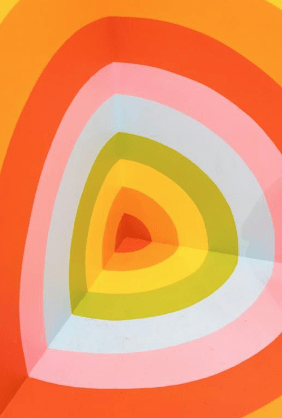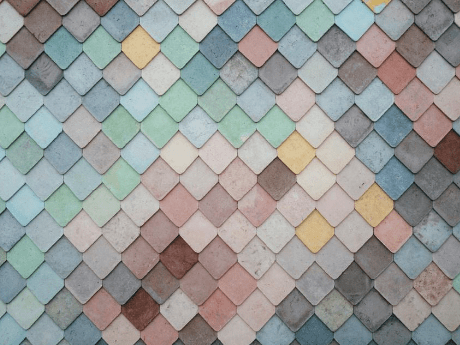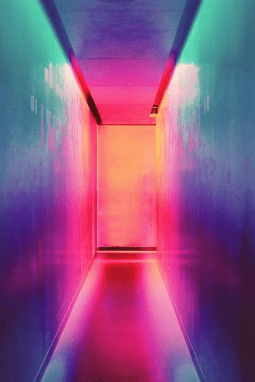While considering interior design color schemes, the choices we make extend far beyond mere aesthetics. Each hue holds the power to influence emotions, perceptions, and even behaviors within a space. Welcome to the realm of color psychology in interior design, where the artistry of hues merges seamlessly with the science of the mind.
Understanding the Impact of Color Psychology
Colors are not merely decorative elements; they are potent tools for shaping the ambiance and functionality of any interior space. The field of color psychology in interior design delves into the profound impact that different colors have on our moods and experiences. From evoking tranquility with soft blues to igniting energy with vibrant reds, every shade has a story to tell.
Creating Harmonious Interior Design Color Schemes
The magic of interior design color combinations lies in the art of balance and harmony. Whether crafting a serene sanctuary or a lively gathering space, selecting the right color scheme is paramount. Consider the following tips for achieving a cohesive and inviting atmosphere:
- Start with a Base: Begin by selecting a primary color that sets the tone for the entire space. Neutral tones like beige, gray, or white serve as versatile backdrops, allowing for flexibility in accent colors.
- Layer with Accent Colors: Once the foundation is in place, introduce accent colors to infuse personality and depth into the design. Experiment with complementary or analogous color schemes to create visual interest while maintaining cohesion.
- Mind the Mood: Consider the intended mood and function of each room when choosing colors. Soft pastels and earthy tones promote relaxation in bedrooms and living areas, while bold hues energize kitchens and dining spaces.
- Consider Cultural Context: Recognize that the perception of color can vary across different cultures and regions. Be mindful of cultural associations and preferences when selecting color schemes, especially in multicultural environments.
Exploring Home Interior Color Combinations
In the realm of home interior color combination, the possibilities are as vast as the imagination. Here are some popular combinations to spark inspiration:
- Tranquil Retreat: Embrace the soothing allure of nature with a palette of soft greens, gentle blues, and warm earth tones. This harmonious combination fosters a sense of serenity and connection to the outdoors.
- Timeless Elegance: For a timeless and sophisticated look, opt for a classic pairing of black and white. This high-contrast combination exudes refinement and versatility, effortlessly complementing any design style.
- Cozy Comfort: Infuse warmth and comfort into your space with a cozy combination of rich browns, creamy neutrals, and soft oranges. This inviting palette evokes feelings of comfort and hospitality, perfect for cozying up on chilly evenings.
- Modern Chic: Achieve a sleek and contemporary aesthetic with a palette of cool grays, crisp whites, and pops of vibrant accent colors. This dynamic combination exudes sophistication and creativity, ideal for modern urban dwellings.
A Reflection of Your Own Personality
Choosing the perfect interior colors to reflect one’s personality is akin to painting a canvas of self-expression within the walls of one’s home. For the adventurous soul, vibrant hues of reds, oranges, and yellows infuse spaces with energy and enthusiasm, mirroring their bold and outgoing nature. Those seeking serenity and calmness may find solace in soft blues, greens, and lavender, creating an oasis of tranquility within their abode. Meanwhile, individuals with a sophisticated flair gravitate towards neutral tones, deep blues, and rich purples, reflecting their refined taste and cultured sensibilities. From the imaginative and unconventional to the minimalist and organized, each personality type finds resonance in a distinct palette, turning interior design into a reflection of personal style and essence.
| Personality Type | Dominant Traits | Recommended Interior Colors |
| 1. Adventurous | Bold, outgoing, energetic | Vibrant reds, oranges, yellows |
| 2. Serene | Calm, peaceful, introspective | Soft blues, greens, lavender |
| 3. Sophisticated | Elegant, refined, cultured | Neutral tones, deep blues, rich purples |
| 4. Creative | Imaginative, unconventional | Vibrant hues, eclectic combinations |
| 5. Minimalist | Clean, organized, minimalist | Crisp whites, cool grays, muted tones |
| 6. Romantic | Dreamy, sentimental, whimsical | Soft pinks, pastel hues, warm neutrals |
| 7. Energetic | Dynamic, enthusiastic, lively | Bright yellows, bold oranges, vibrant greens |
| 8. Traditional | Classic, timeless, conservative | Warm browns, deep reds, classic neutrals |
FAQs:
1. How does color psychology influence emotions and behaviors in interior design?
Understanding color psychology allows designers to strategically use colors to evoke specific emotions and behaviors in interior spaces. For example, warm tones like reds and oranges can create a cozy and energetic atmosphere, while cool blues and greens promote a sense of calmness and relaxation.
2. What factors should I consider when selecting colors for interior design based on color psychology?
When selecting colors for interior design, it’s essential to consider factors such as the room’s purpose, natural lighting, and the desired mood or ambiance. Additionally, cultural associations with certain colors should be taken into account to ensure the chosen palette resonates with the intended audience.
3. Can color psychology be applied to small or awkwardly shaped spaces?
Yes, color psychology can be effectively applied to any space, regardless of size or shape. In small spaces, lighter colors can help create a sense of openness and airiness, while strategic use of color can visually alter the perception of awkwardly shaped rooms, making them feel more balanced and cohesive.
4. Are there any universal principles of color psychology that apply to all interior design projects?
While individual preferences and cultural differences may influence color choices, some universal principles of color psychology can guide interior design decisions. For example, complementary color schemes, which pair colors opposite each other on the color wheel, often create visually striking and balanced interiors.
5. How can I incorporate color psychology into my interior design without overwhelming the space?
Incorporating color psychology into interior design doesn’t always require bold or dramatic color choices. Subtle accents, such as throw pillows, artwork, or accessories, can introduce pops of color that subtly influence the ambiance of a space without overwhelming it. Additionally, using neutral tones as a base allows for flexibility in adding accent colors to achieve the desired psychological effects.
In interior designing, color is more than just a visual element; it is a powerful tool for shaping emotions, perceptions, and experiences. By harnessing the principles of color psychology in interior design and exploring innovative interior design color schemes, you can transform any space into a harmonious reflection of style and personality. So go ahead, unleash your creativity, and paint the canvas of your home with a palette of possibilities.



